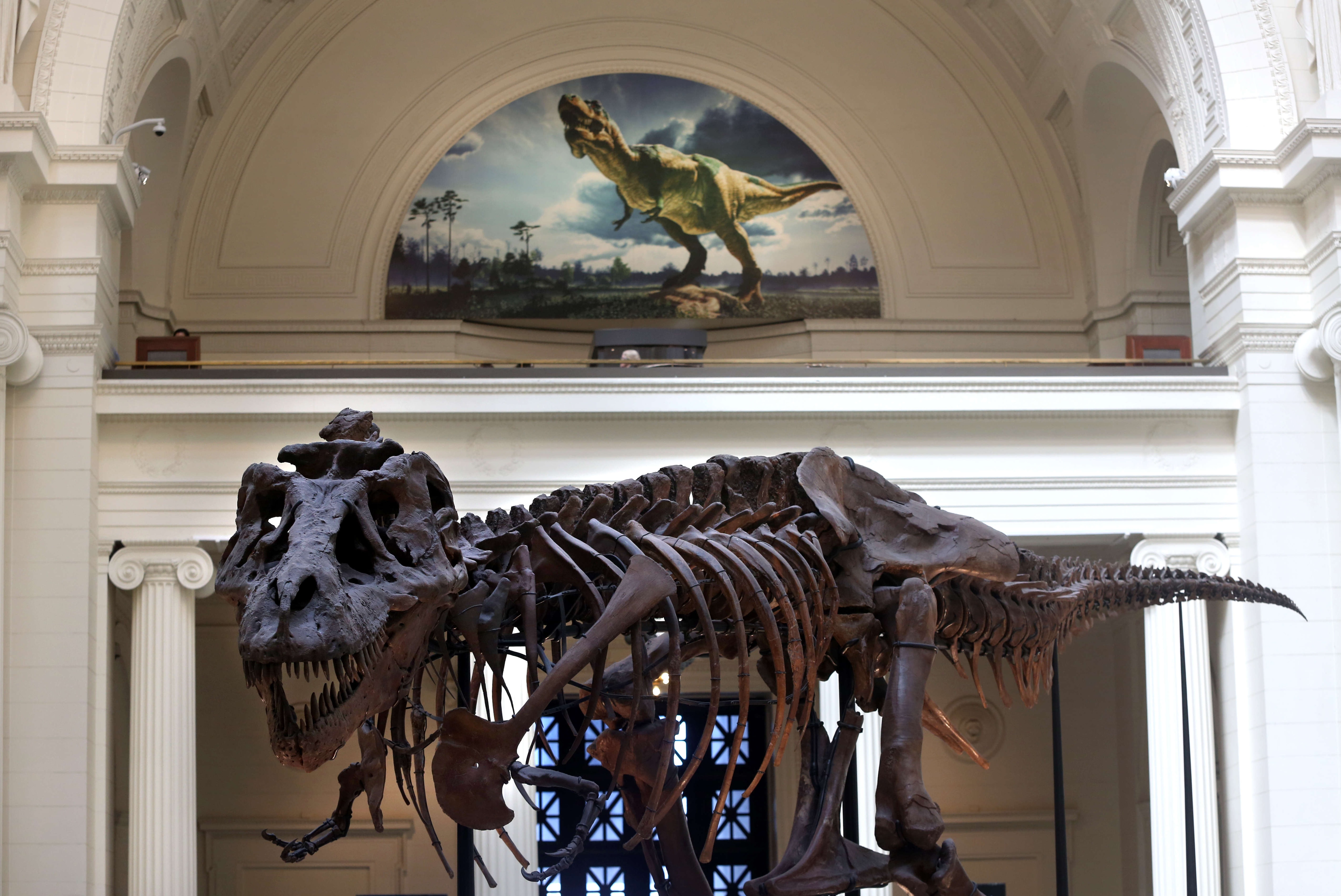Create a free profile to get unlimited access to exclusive videos, sweepstakes, and more!
Clever girl! World's most complete T-rex skeleton comes to life with skin, muscles in new display

The Chicago Field Museum’s Tyrannosaurus rex skeleton is currently looking more “before” than “after” right now.
The beloved dinosaur fossil — named “Sue” after Sue Hendrickson, the palaeontologist who discovered the bones — has currently been replaced by a more life-like model, designed to display what the T-rex would have looked like with all its skin and muscles intact — while also eating a baby Edmontosaurus (itself a model). It’s currently part of an exhibit called “Sue in the Flesh,” and sits in the same spot in Stanley Field Hall as Sue’s more skeletal counterpart.
The model was created by Blue Rhino Studio in Minnesota, a company specialising in creating life-size (and life-like) models for museum displays, including a few other dinos available to view at the Field Museum.
This fuller recreation of Sue captures their exact size and scale (40 feet long and 13 feet tall) and includes some details that would have been true of a T-rex at the time, like scars and scratches. In fact, as Bill Simpson, the Head of Geological Collections at the museum tells the Chicago Sun-Times, the model features a scar on its left ankle that experts think caused a bone infection, and may have been caused by Sue being “rammed by a Triceratops” or even “battered by the clubbed tail of an Ankylosaurus.”
And despite recent reports that dinosaurs may have possessed feathers, Simpsons says that the fossils that have been discovered indicate that dinosaurs were not actually covered in them, hence Sue’s scaly new exterior.
As for Sue’s new interior, Ben Miller, an exhibition developer at the museum says the model is comprised of dense foam and a fiberglass shell, the result of a production process that took nearly a year to create, even using a miniature 3D print out of Sue’s original skeleton.
Sue, who was discovered in 1990, is one of only 30 T-rex fossil specimens that have been found worldwide but is currently the largest and best-preserved, with 90 percent of their bones intact.
This new exhibit is the latest attempt to give audiences a taste of what it would be like if dinosaurs were indeed still alive and amongst us, including a new augmented reality viewer from Google. (Thankfully, no one seems to be attempting to create a Jurassic Park!)
The current, fleshier model of Sue will be on display at the Field Museum till Aug. 17, after which it will become part of a travelling SUE exhibition.


























